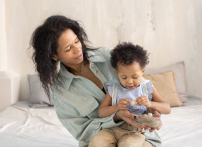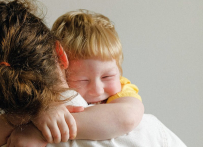Imagine dropping your child off at childcare, expecting a safe and nurturing environment, only to hear unsettling stories about safety breaches and inadequate regulations. It’s every parent’s worst nightmare. The recent sexual abuse allegations made by police against a Melbourne childcare worker in late May this year, has ignited action within the Australian government, spurring a suite of proposed childcare safety reforms designed to protect our youngest and most vulnerable citizens.
These legislative changes aim to fix the cracks in the system by enforcing a 'one-strike' funding cut policy, creating a national childcare worker database, and beefing up safety measures, including CCTV installation and stricter Working With Children Checks. But what do these reforms mean for families? How will they affect your childcare choices, and how might they ensure you can drop your little one off with greater peace of mind?
The 'One-Strike' Funding Cut Policy
If there’s one part of the reform that’s got people talking, it’s the 'one-strike' policy. Under this proposal, childcare services that fail to meet minimum safety standards could lose federal funding on their first breach and we’re not talking about minor infractions like misplaced crayons. We mean the big stuff, the kind of failings that jeopardise a child’s safety.
This policy is designed to be a wake-up call for providers who might be cutting corners. By tying funding to compliance, the government hopes to raise the stakes for keeping children safe.
What This Means for Families
For parents, this policy signals a shift toward zero tolerance for unsafe practices. Services will be under increased pressure to meet all safety standards. However, there’s a flip side. Smaller, community-based childcare centres often operate on tight budgets. If one violation leads to funding cuts, they could struggle to survive. This could reduce options for families in rural or less populated areas.
The success of this policy will likely rest on how authorities enforce guidelines without unfairly penalising honest mistakes. Time will tell if the heavy-handed approach encourages providers to shape up or inadvertently shuts some deserving centres down.
A National Childcare Worker Database
Remember how your mum used to joke about having eyes in the back of her head? Well, consider the national childcare worker database the government’s equivalent. This proposed system would track childcare workers’ employment histories, ensuring anyone with a concerning record can't quietly hop from job to job without scrutiny.
Why This Matters
Childcare is a deeply personal decision for families, and trust is a big part of it. Knowing that your provider has passed the most rigorous background checks and is part of a transparent system brings reassurance. For families, this database will mean greater accountability and the knowledge that workers entrusted with care are thoroughly vetted.
There’s also a symbolic weight here. By centralising childcare worker records, authorities are making it clear that safeguarding children is not negotiable.
Of course, creating a national database is logistically complex. Current state-based systems will need harmonisation, and privacy concerns have been raised. However, the consensus is that the benefits of protecting children far outweigh these hurdles.
Enhanced Safety Measures
If installing CCTV cameras in childcare centres makes you think of Big Brother, you’re only halfway there. While these cameras won’t broadcast snack-time live feeds, they will be used to deter wrongdoing and assist in investigations when necessary. It’s about creating a secure environment and backing it up with concrete evidence when things go awry.
On top of this, the proposed reforms include strengthening Working With Children Checks (WWCC). WWCCs would be updated more frequently, with checks extended to capture those who may currently slip through the cracks.
How These Changes Could Work in Practice
For parents, the assurance that every precaution is being taken adds a sense of comfort but cameras and documentation are just tools. They’re not foolproof. While these measures are a step forward, they also spark questions. Will providers pass the costs of additional compliance onto parents through higher fees? What happens in situations where privacy and safety intersect?
The Bigger Picture
These proposed reforms come on the heels of horrifying allegations of abuse in Australian childcare centres. They are not just preventative steps, they are a direct reaction to failures in the system. By instituting strict safety protocols, the government aims to rebuild trust and ensure childcare providers place safety above all else.
But let's not sugarcoat things. Implementation won’t be a walk in the park. Integrating systems, training staff, and ensuring seamless compliance across states will take time, money, and coordination.
What Families Can Do
While the government and providers work toward implementing these changes, families have a role to play too. Here are a few steps you can take to ensure your childcare choices align with your safety expectations:
- Ask Questions: Never hesitate to ask your childcare provider about their safety measures, staff training, and background check protocols. Providers who prioritise child safety will welcome the discussion.
- Follow Updates: Keep an eye on the rollout of these reforms. The more informed you are, the better equipped you’ll be to choose a centre that meets your standards.
- Trust Your Instincts: If something feels off during a tour or while speaking to staff, trust your gut. Your intuition is an important tool when it comes to selecting the right environment for your child.
The Road Ahead
These childcare safety reforms have sparked much-needed conversation about what “safe and secure” really means in a childcare setting. By raising expectations, enforcing compliance, and arming families with more tools, Australia is taking a stand against risks in the sector.
Yet as with any sweeping reform, this is only the beginning. Success will depend on whether these measures can balance high safety standards with fairness to conscientious providers. For families navigating the childcare landscape, the hope is that these changes translate into safer, happier days for every little one in care.
































